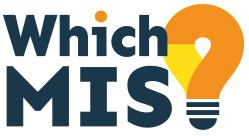We asked all MIS providers to let us know of any product development areas they are investing in. Without getting into the minutiae of very specific feature updates, there was definitely some common ground when looking at areas of focus.
N.B. Whilst we asked all MIS vendors to comment, here we are able only to highlight comments from those providers who responded to our request for information.
The ‘one-stop-shop’
As we acknowledged in our ‘Functionality Focus’ article, there’s a continuing trend among many MIS providers to bolster their solutions and thereby reduce the need for third party software products.
As Bromcom point out: “We’ve worked with the education community to build a comprehensive product designed to support everyone from the students and parents, all the way up to the Trust Board. Each year Bromcom says goodbye to another costly bolt-on – we are consolidating more and more data and functionality into a single, seamless solution”.
Similarly, when Satchel One launches in October 2023, they claim they will be better supporting schools “looking to consolidate their software costs and providers without having to settle for sub-optimal features”.
SIMS mention their Take Register feature, which is already being rolled out to primary schools, while Arbor highlight ‘tables and marksheets’ that will give schools “the ability to customise their data” – as well as Payments Plus, their “very own end-to-end payments module, designed to help schools go cashless”.
Meanwhile, iSAMS highlights an increased focus on improving parental engagement with their new and improved cloud portals, as well as “ongoing enhancements to our Wellbeing manager to support pastoral care”.
Timetabling, is mentioned by a number of vendors, and Compass point out how much effort they’ve been channelling there: “We’ve also been building an advanced engine to automate school timetabling, called ‘Griddle’. This has been a significant investment for us, and we believe it will transform the lives of timetabling staff. With features that range from linked teaching and curriculum rules to multiple levels of validation and multi-user functionality, Griddle automatically and seamlessly generates high-quality timetables that are free of conflicts.”
Veracross talked about their recent acquisition of Firefly Learning and how that is “going to help deliver strong, two-way integrations between Veracross and Firefly for schools across the globe.”
They also talked of “working hand-in-hand with Toddle to deliver market-leading integration which will support IB-specific academic documents, grades, schedules, and student portfolio management” which will no doubt be of interest to independent and international schools in particular.
IRIS Ed:gen continued the theme of a one-stop-shop approach stating that they are “continuing to add more data sources to IRIS Ed:gen such as HR, finance, parental engagement, catering, assessments and even external benchmarking and performance data, to make it easier for schools and trusts to make informed decisions. Additionally, we are developing a number of improvements to help those conducting evaluations simpler and more efficient.”
Data analytics
Some years ago, a number of organisations, such as Assembly, Groupcall and Novatia Questa started working heavily in the field of data analytics. It seems logical then that another clear focus articulated by many MIS providers is around crunching the data they process and providing clear insights to inform management decision making.
Many of the product development items highlighted by Bromcom relate to dashboard, PowerBI and MAT analytics enhancements.
ScholarPack point to the functionality they have added which allows schools to analyse assessment and attendance data based on key pupil aspects, such as SEND, EAL and PP as well as school-defined groups.
Meanwhile, sister company, Arbor mention their “Live National Benchmarks” which is built-in to their MIS, to help schools to compare their performance on key measures against over 3,500 other Arbor schools nationally.
SIMS claim their Next Gen release will enable schools to “fully unlock the power of the data they record on students. By presenting school staff with student data as bright and colourful dashboards, charts and proactive alerts, teachers will be able to identify when their students may need additional support and school leaders will have the key information they need to know about their school in their hands without searching for it”.
Finally, Compass have invested resource into their new data analytics module, ‘Pulse’, which was launched a few weeks ago. They say they are “getting into the detail on how we can use data and analytics to really help teachers in the classroom. For example, we need to use data to create predictions of future activity such as intervention recommendations for students who have identified patterns of absences from school or behavioural observations.”
IRIS Ed:gen’s claim (above) that they are adding “external benchmarking and performance data, to make it easier for schools and trusts to make informed decisions.” seems to endorse the importance of analytics and quality data. They went on to say that they will be “looking at Machine Learning and Artificial Intelligence to evolve our analytics tools to spot trends and support leaders in better understanding data.”
Reducing the administrative burden
With the well documented ‘teacher workload crisis’, a key focus for all EdTech companies is on reducing administration to allow teachers and admin staff to focus on the areas that are more likely to make a difference to outcomes – and this is crucial for management information systems, where a huge chunk of their functionality relates to admin.
ESS speak of the ‘major customer listening exercise’ they have been conducting, involving several hundred users to help shape the future product development of SIMS. Their stated aim of this activity is “to develop an MIS that cuts the administrative burden and reduces the cognitive load required to manage a classroom, school or MAT”.
On the subject of reduced administration, Compass make specific reference to examinations and course management functionality – designed to enable secondary and post 16 schools to manage exams, course enrolments and record post 16 related census data. They claim that their “intuitive user workflows and attractive user interface will simplify the most daunting of administrative tasks.”
Compass maintains that current processes for exams are disjointed, with other solutions requiring the user to interact with multiple parts of their platform unnecessarily. They claim that the ‘wizard’ functionality of their exams module “will make setting up exam seasons, importing base data, entering candidates and generating timetables easy, guiding users step by step throughout the entire process.”
HUBmis told us that the next item for them will be HUBadmissions, a “cloud-native CRM that will support Independent Schools in meeting their enrolment goals, through allowing them to better engage with prospective pupils’ parents, increase enquiries, and make strategic marketing decisions.”
Increasing MAT functionality
Across the board, we are also seeing an increased focus on functionality specific to the needs of multi academy trusts.
For example, The Arbor Shared Teaching module allows schools in a MAT to share classes. They have also relaunched their MAT MIS, adding centralised communications, improved HR functionality and push down policies.
Meanwhile highlights from Bromcom include a MAT CEO Dashboard, MAT HR functionality, MAT Finance enhancements on reporting and user security site access as well as the aforementioned Power BI MAT Analytics enhancements for KS4/KS5 dashboard and exclusions.
System and data security
Only a couple of the MIS’s stressed a focus on security.
iSAMS said that they were committed to continuing to work hard to protect schools “with secure solutions, including our payment gateway that enables parents to pay school fees securely online using a variety of popular payment methods.”
ScholarPack made reference to its “new REST API infrastructure, a modern, faster performing and more secure API, while Bromcom mentioned “an increased emphasis on data privacy and security.”
Summary
There’s certainly commonality in the key themes mentioned by the MIS providers, each of which is at pain to stress the extent of their interaction with schools and MATs on informing their roadmaps and product development schedules.
WhichMIS? will keep you posted on key developments in this area in the coming months.

